
Discovering trench art
Across centuries, wars and conflicts have pulled people from their everyday lives into literal and figurative battlefields. Whether they were soldiers, nurses or prisoners of war, they all left big pieces of their individual identity at home. By creating art, people at war were able express themselves and begin to process what they were experiencing.
Soldiers would make objects from discarded ammunition, take unflinching photographs of their surroundings, and write stories to capture their time as a soldier. These works later became known as ‘trench art.’
It’s become a popular subsection of the folk-art scene, because of the amazing creations that came from crude materials and raw talent.
Join us as we trek through the rich collection of trench art in Trove.
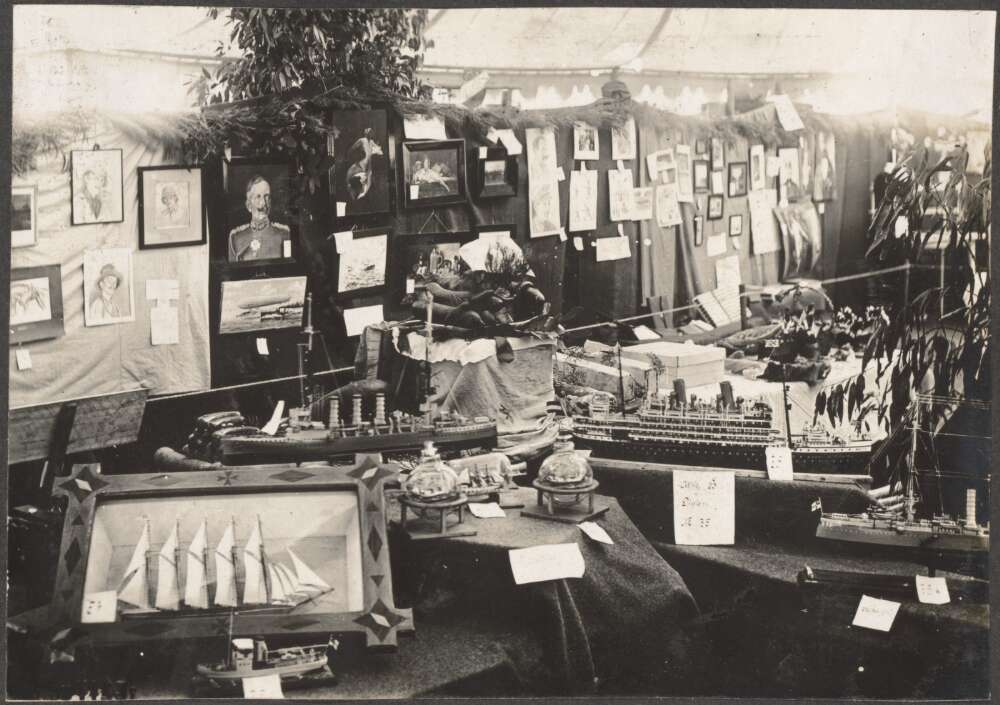
Snapshots of war
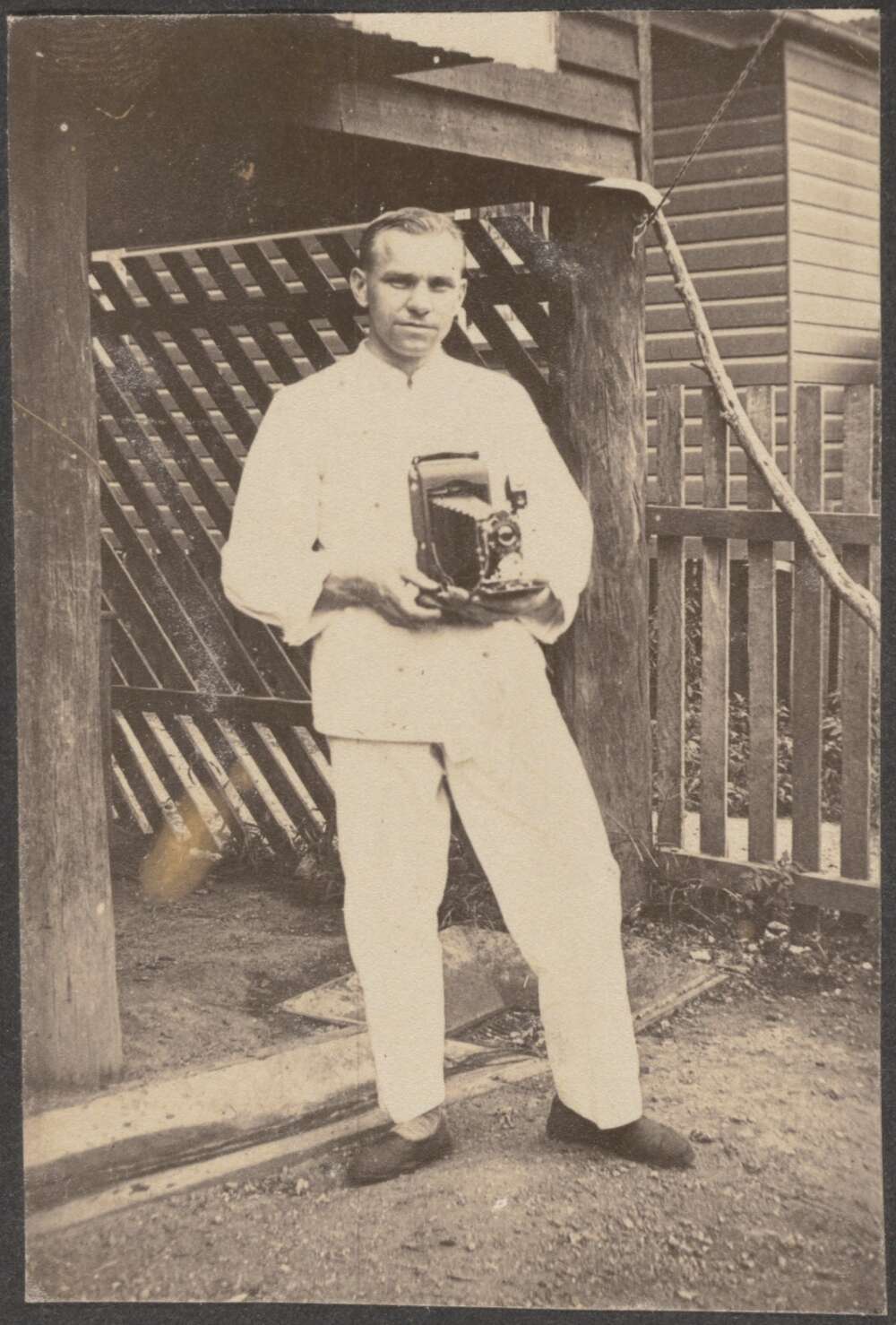
Carl Schiesser was a soldier in the German army who was later detained in internment camps in Australia. He documented his experiences through photography, and in the process captured the experiences of other soldiers creating trench art.
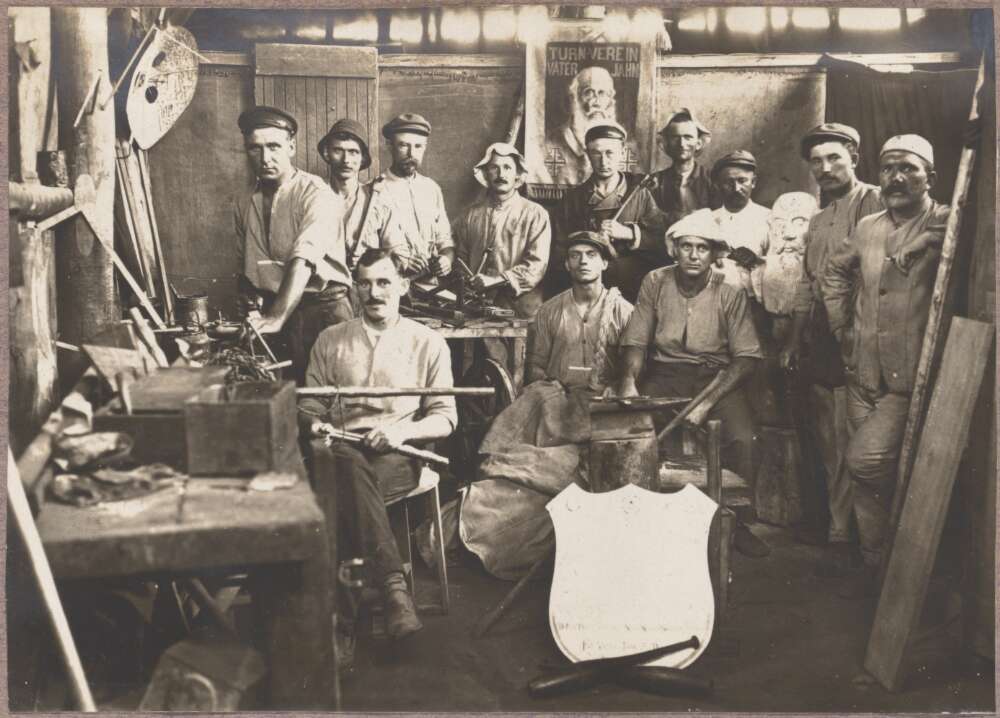
Carls photographs included the arts and crafts exhibition at Holsworthy Internment Camp. The items on display at the exhibition ranged from chess boards to model ships and handmade tools.
View the collection of Carl Schiesser photographs.
Capturing stories in print
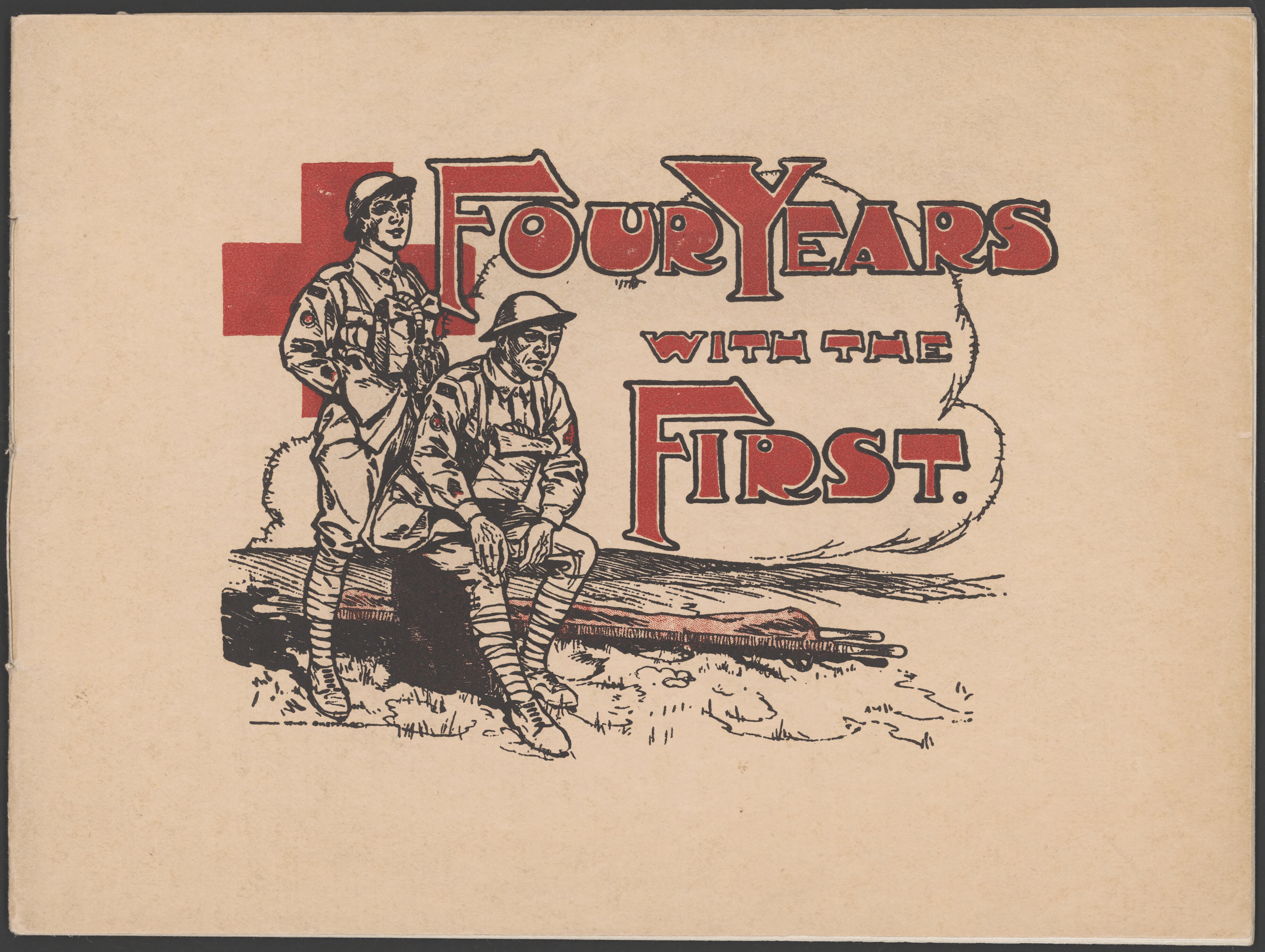
Four Years with The First’ was a publication made from the joint contributions of the First Australian Field Ambulance unit. The book contains poems and diary entries which shared stories of the soldier’s wartime experiences. There are also illustrations throughout, said to be contributed mostly by Private Sheppard and Private Dunne.
The stories and sketches were a way for the soldiers to understand and remember their wartime experiences.
‘That this work will fill a place in our homes, as a reminder of sad days, of glad days, of hard work and recreation, of friends and sometimes of enemies, of four and a half years lived under all sorts of conditions is the sincere wish of its compilers.’
One soldiers trash...
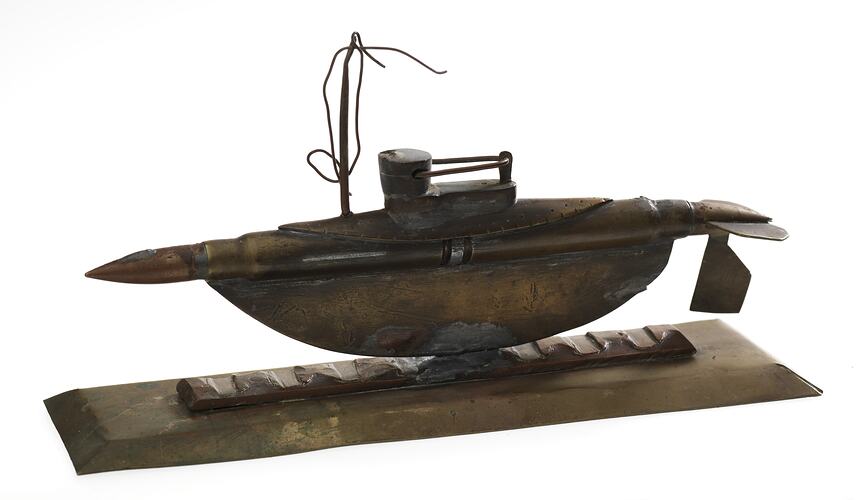
Over the course of World War I, it’s hard for anyone to reconcile the amount of ammunition dispensed and the damaged it inflicted. One soldier, Corporal William J. Young from the 22nd Battalion, made a model submarine out of discarded ammunition.
Corporal Young’s decision to take something that proved so lethal and turn it into a work of art is one of the fascinating elements of trench art. Objectively, it might not be the most beautiful of objects, but you when factor in the limited number of supplies available, the volatile surroundings and the elements that make up this model, it is an impressive item to behold.
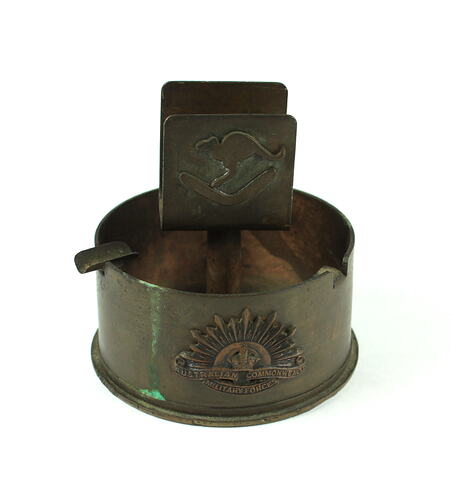
This metal ashtray was made from a used two-pound shell during World War II, it has a badge on the front for the Australian Commonwealth Military Forces. It also features a matchbox holder with a kangaroo jumping over a boomerang.
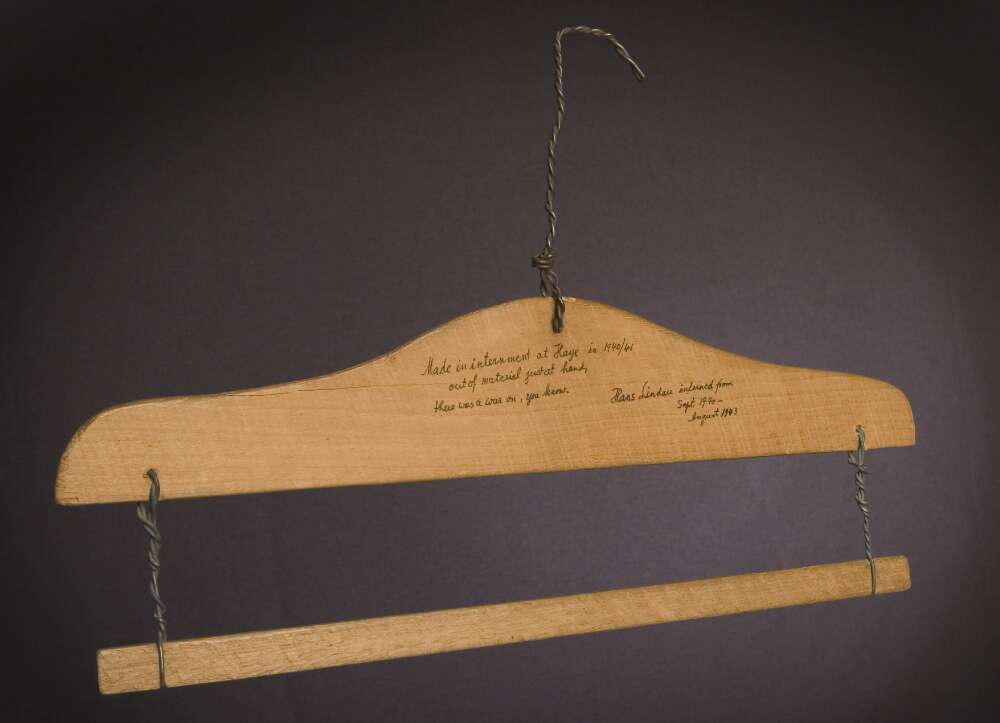
This coat hanger was made in the Hay internment camp in the early 1940’s by Hans Lindau.
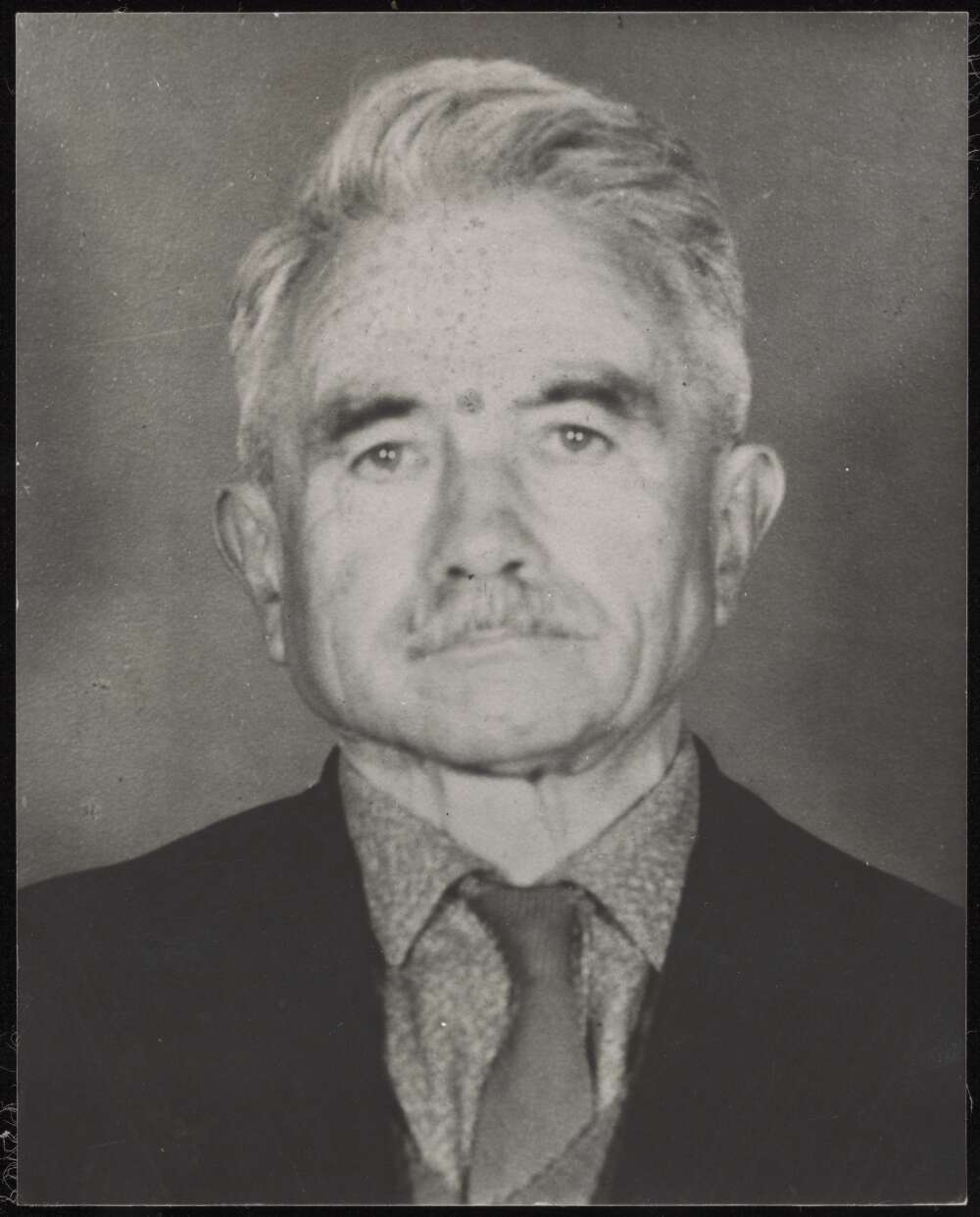
Hans was born in Berlin in 1895 and enlisted in the army during World War I. He became involved in student relief organisations which eventually led him to England where he was interned in 1940.
Discover more incredible objects and stories in the papers of Hans Lindau.
But this isn’t a definitive list, there are an abundance of items to still uncover. From carved wooden models to toys crafted from scrap metal and an incredible array of paintings, there are more than 300 objects in our collection that relate to trench art. Start exploring trench art in Trove.